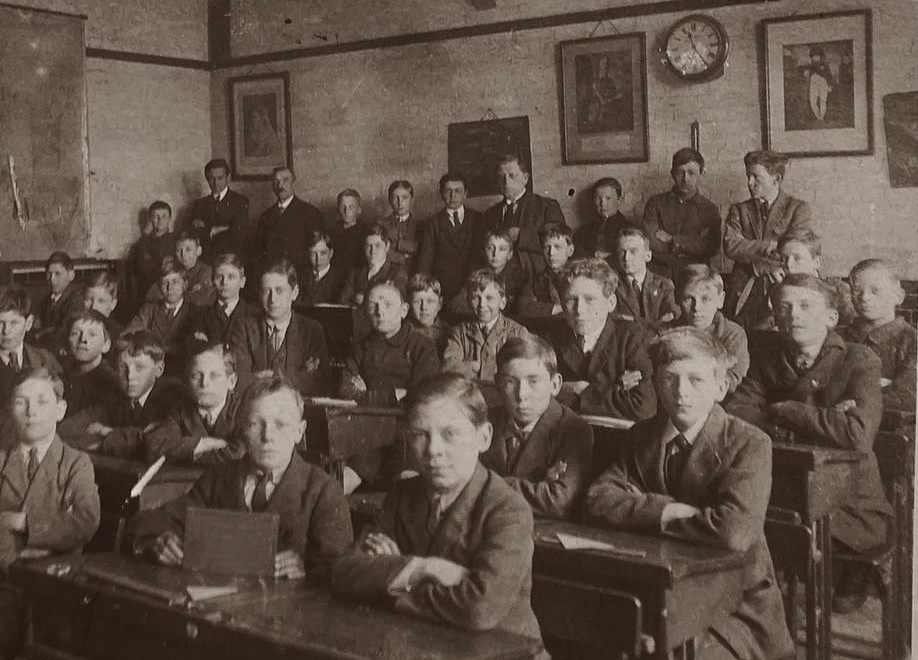
The word “cantonist” first appeared in 1805 and it comes from the Prussian “canton”, which means regimental district. Cantonists were minor children from families of lower military ranks. A sharp rise in the number of cantonists was observed after the Patriotic War of 1812 when many boys who had been left without parents volunteered to join their ranks.
In the Russian Empire, cantonists were registered with the military department from birth. By the age of 14, they had to become students of the cantonist school as only these children could study there.
The military structure and its units were formed in 1826. The most famous were the Kazan battalions as well as the Saratov and Perm battalions.
Since 1827, these schools have been sending homeless children, children of gypsies, schismatics, Polish rebels, gentry without a nobility title, Jews and many others.
Cantonist schools have been operating in almost all provinces since the first half of the 19th century. The children were first taught how to read and write, and later about artillery, fortification and other sciences. If someone did not have any time in training, they could master the profession of a blacksmith, shoemaker or carpenter. Successful individuals, having graduated from school, improved their qualifications for three more years. Some graduates became teachers in these schools, while others took non-combatant jobs in the military and naval departments or were sent to participate in military service. To complete their training, graduates had to serve (noblemen for 3 years; chief officers’ sons, 6 years; sons of clergy, 8 years; and the rest, 25 years, which made it possible to become an official and complete military service with distinction (after 12 years) and for length of service (after 20 years)). The time spent at the garrison school was not included in compulsory military service.
During the reign of Nicholas I, the education of engineers, military doctors, topographers and auditors was added to the cantonist schools. The study term also changed dramatically: before the age of 10, boys studied in elementary school; between 10 and 14 they attended middle school; and from 14 to 18 they were educated in senior school. The number of students increased to 36,000. It should be remembered that this only equates to one tenth of this demographic; the remainder were brought up by relatives and received a salary.
Dismissal could apply to a variety of people: legitimate sons of staff officers, military officials of the corresponding classes, as well as holders of the Order of St. Vladimir of the VI degree; one of the sons of senior officers in the lower rank; one of the sons of the lower ranks crippled in the War; or one of the sons of lower-ranking widows whose husbands died in the line of duty.
It is important to separately discuss the Jewish cantonists. With the annexation of part of the Commonwealth, the Russian Empire received a significant proportion of the Jewish population, with which the government had a special relationship. The replenishment of the cantonist ranks with Jewish recruits almost doubled the number of recruits of Russian origin. As a result, in percentage terms, the number of Jewish cantonists significantly exceeded the number of Russian cantonists, which was not the case among the rest of the population. Officially, Jewish boys were drafted into the army at the age of 12, but in reality they were often drafted by force at the age of 8 or 9. When the Jewish community could not cope with the planned replenishment of recruits, the children were caught on the streets and illegally taken to the cantonist detachments. Their relatives were not informed so the children were separated from their families for more than 20 years. The Jewish cantonists had stricter rules and particularly harsh punishments for even the slightest offence. Not everyone agreed to this policy but those that didn’t were subjected to additional torture and persecution.
Non-commissioned combat officers, musicians, surveyors, conductors, draftsmen, auditors, clerks and artisans were the cadres that the cantonists supplied to the army. The Manifesto of Alexander II of 1856 forbade the forcible sending of children to military schools and abolished the concept of “cantonist”. The abolition of cantonist schools followed in 1858 and military schools were formed instead. In 1866, these were called military primary schools and later military gymnasiums. A certain external resemblance to cantonist schools could be observed in schools for children of soldiers under the Guards regiments that existed at the turn of the 19th and 20th centuries, but the children attending them studied voluntarily. These schools were intended to replenish the ranks of the Guards troops with scribes, musicians and singers.
The majority of cantonist family research can be conducted via RGVIA in the archives of the Russian federation, or by enlisting the services of a professional genealogist who specialises in this type of ancestry.
enquiry![]() truegenealogist.com
truegenealogist.com
